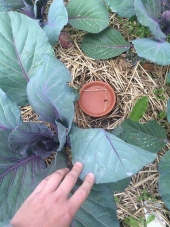
 5
5




 4
4




 4
4




 4
4




 1
1




Invasive plants are Earth's way of insisting we notice her medicines. Stephen Herrod Buhner
Everyone learns what works by learning what doesn't work. Stephen Herrod Buhner
 3
3




Anne Miller wrote:Well, it sounds like you are doing it right! Keep adding organic material and you might get a win, win situation.
 6
6




Visit Redhawk's soil series: https://permies.com/wiki/redhawk-soil
How permies.com works: https://permies.com/wiki/34193/permies-works-links-threads
 8
8




Air and opportunity are all that stand between you and realizing your dreams!
 5
5




larry kidd wrote:Be careful putting to much wood ash in any one place. It's great stuff used CONSERVATIVELY to much in one place can cause issues!
Daikon radishes planted in late summer, fall or early winter helps heavy clay soils more than you can possibly imagine! Here in Virginia they usually survive the winter and grow anytime temps are above 45f or so from what I've seen. I've had some drill as deep as my arm is long...
 7
7




Jay Angler wrote:I have found that biochar really helps lighten my clay soil.
I am glad you figured out to layer the clay and the organics because I've found that the combination is important.
Have you improved your worm count?
 4
4




 5
5




 4
4




 6
6




 4
4




Ben Brownell wrote:I've recently come around to appreciate the oft maligned role of gophers in slowly but surely 'tilling' through heavy soil and incorporating lots of organic matter and microbial life as well as aeration and water percolation to improve conditions drastically over long enough time scales (decades).





|
It would give a normal human mental abilities to rival mine. To think it is just a tiny ad:
The new gardening playing cards kickstarter is now live!
https://www.kickstarter.com/projects/paulwheaton/garden-cards
|




